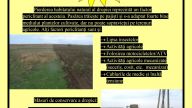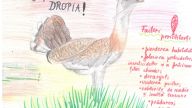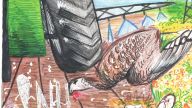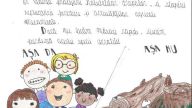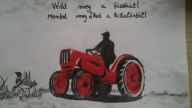The rehabilitation of the reed lake, a swamp that had become eutrophicated in the Culișer meadow, located in Salonta, Bihor county, has been carried out in the past 3 years within our project based on cross-border public-private partnership.
Pupils in Bihor County had to do simulation exercises on the nesting of the Great Bustard as early as February

6 May 2020
It is a great joy for us to know that, through this practice, we have put the children to face a situation, which after many decades has finally become a certainty.
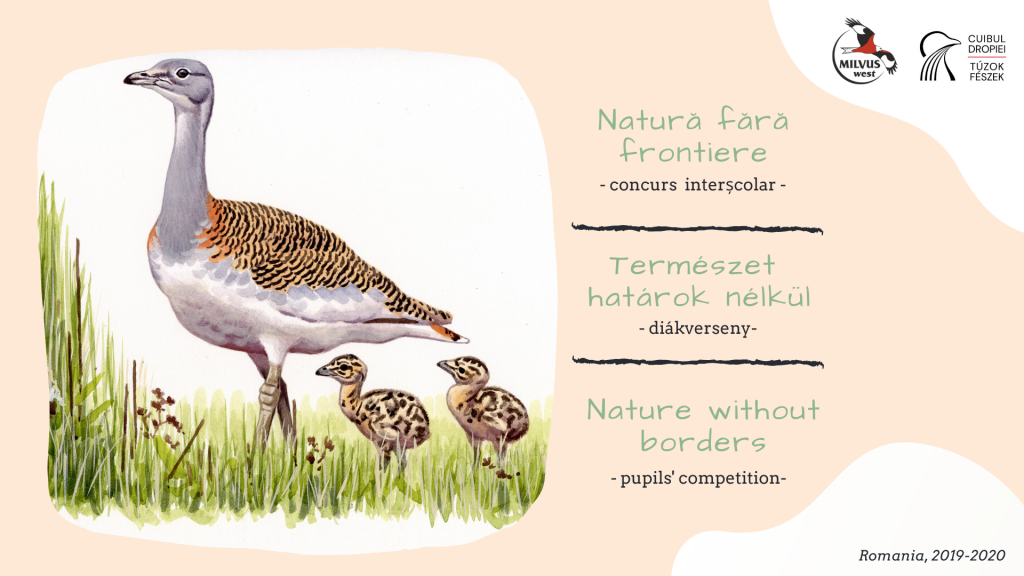
The schoolchildren who took part in our Nature without borders contest, organised within The Nature Corner project, had the opportunity as early as February to do a simulation exercise, should a bustard nest in a plot of wheat.
The challenge designed for the students was to solve the dilemma of the bustard female, who having her chicks hatched in a plot of wheat had to lead them safely to feeding grounds. Unfortunately, the lucerne plot which was next to the nesting place was mowed too early, and the chicks were left with no available food source nearby. The children put themselves in the place of the bustard mother and solved the not-so-easy problem quite ingeniously.
They were also asked to give their advice to farmers for the protection of the bustards. We received many useful and enjoyable suggestions. Many are worth considering! 😊
Our recommendations to the farmers were quite dull compared to those of the children. The agro-environmental scheme for the conservation of the Great Bustard, drafted by Milvus Group, is available for bustard-friendly farmers since 2017.
* * *
Here are some of the pupils’ recommendations in their original, unaltered form:
- "- Do not mow the lucerne until July
- - Sow wheat next to cattle pastures or close to the abandoned meadows
- - Farm 20% cereal grains, a minimum of 40% perennial crops and 10% oilseed rape
- - Make sure there are larger plots for unmowed meadows and cattle pastures
- - We would recommended the farmers to stop mowing the lucerne, or the fallows so that the bustard chicks wouldn’t have to walk long distances to the feeding grounds, and to use pastures for sheep farther from the bustard nesting sites, and for cattle closer.
- - Try to not mow the land simultaneously, otherwise the bustards may be in danger
- - Do not destroy the nests and the eggs
- - Do not kill the chicks
- - Use mosaic crops
- - Do not alter their natural habitat
- - In my opinion, I believe the farmers could ask their employees to transport themselves the chicks to the feeding grounds."
"Dear farmers, please:
- - Do not disturb the display and nesting areas
- - Do not perform mechanized agricultural work during the nesting time and when the chicks are unable to fly
- - Preserve the grasslands
- - Cut back on the chemicals, pesticides, insecticides and use natural fertilisers instead"
* * *
The students were also asked to accomplish a more creative task - they had to work in teams to design an artwork related to the protection of the Great Bustard. Even though the exercise had to tackle a particular threat (or more) to the species, the works fully reflect the pupils’ effort, good cooperation and creativity.
Finally, here are some of the works out of a total of 86.
* * *
We would like to thank all the teachers and especially their students, who completed the second round of our competition even under these unlikely circumstances. We are glad that out of a total of 184 registered teams (552 pupils), 176 finished the first round, and almost half (86 teams) completed the second round. Sadly, we had to postpone the final until autumn. Nonetheless, we are looking forward to meeting the young nature-lovers.
- Contest coordinators and ecological education responsibles: Kelemen Katalin, Papp Judith (Milvus Group)
- Ilustration: Szabolcs Kókay

